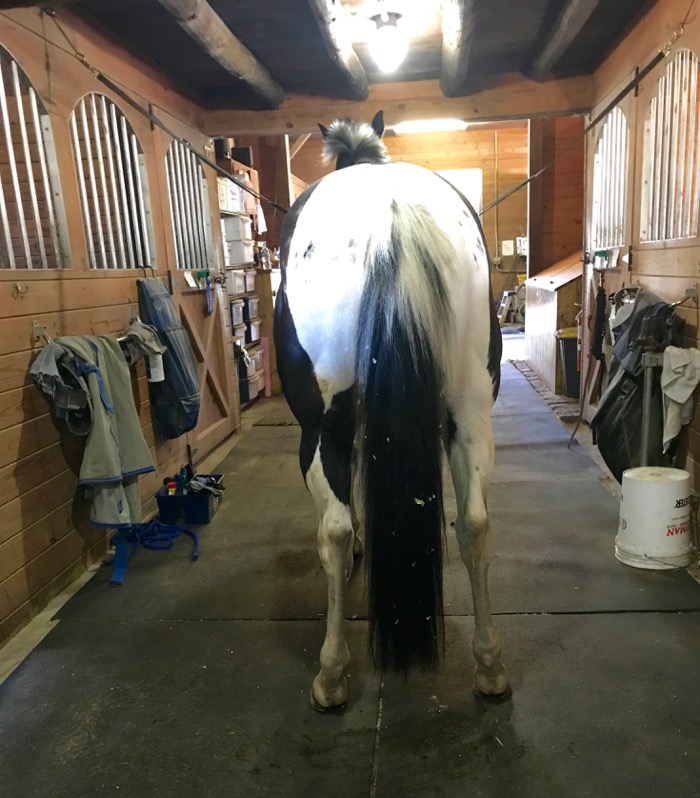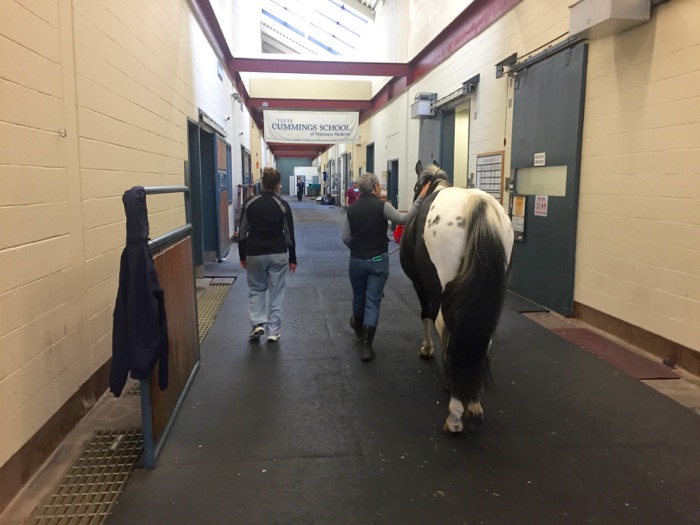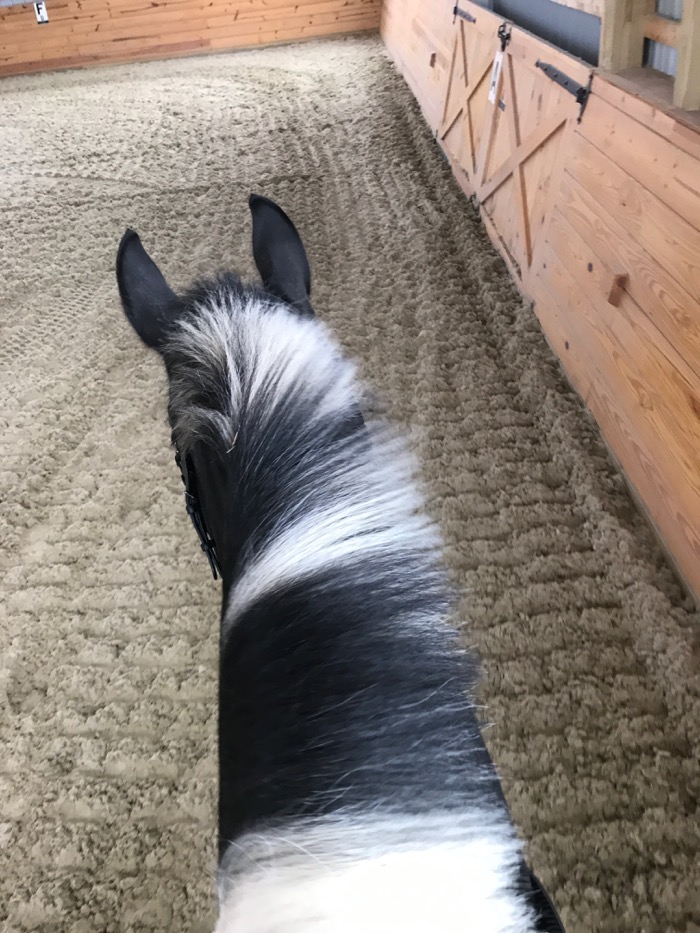Last January, Tonka started to twitch his head, but only when ridden, and only in a specific posture. I called on my veterinarian. Whatever it was that was bothering him seemed to be a small issue. Tonka was otherwise sound. We checked his bridle and saddle fit, which were fine. Symptoms worsened. His back and neck became sore. We tried muscle relaxers. Symptoms continued to worsen. By March, Tonka wasn’t able to trot under saddle. X-rays were taken. He had damage in two of his neck vertebrae. The best guess was that he’d slipped on ice in his paddock and had injured himself, and that the pain of it worsened over time. Injections into his neck joints seemed to fix everything.
However.
There were times when my good, willing horse, didn’t seem to have any try in him. His canter was especially stiff and he resisted suppling exercises. Then, two months ago, Tonka refused to move. He looked sound – he moved evenly on all four legs – but something was very wrong. At the same time, I broke my foot. We both took 6 weeks off. The rest did my foot good, and it’s almost healed, but nothing changed for Tonka.
I noticed that he stood wide, and there were tight, hard, oblong muscles along the top of his haunches. He was overcompensating for something.

Horses are big and complicated. Sometimes you have to look inside of them. Luckily for us, Tufts University has a Large Animal Hospital associated with their veterinary school. It’s state-of-the-art. Tonka went in for scintigraphy, which would enable us to see any inflammation in his skeleton.
Tonka, of course, wowed the staff with his amenable behavior (more on that in another post!) Here he is, going to the stabling facility.

There was a large stall, with unlimited hay. He liked it!

The scintigraphy made him radioactive for a day, so he had to stay two nights.

The scintigraphy gave us a diagnosis: Tonka’s sacroiliac joints were inflamed. This might have happened when his neck was injured. It might have happened when he had to overwork his rear end to protect the pain in the neck. Whatever, once the joints become inflamed, they can’t fix themselves on their own, or with rest. Tonka’s wide stance and overworked muscles confirm this diagnosis. Dr. Bubeck then did ultrasound to see if any associated ligaments were also damaged. The very good news to that was that they are fine. I believe that trusting what Tonka told me – that he had a good reason for me not to get on – kept the injury to affecting only the joints and not the soft tissue. This makes recovery much easier!
Tonka’s sacroiliac joints were injected with a cocktail of medications, and Dr. Bubeck believes that he’ll be back to normal in three weeks. Also, it shouldn’t recur. That’s very good news.
I was also thrilled to hear that I could get back on and slowly bring Tonka back into work. So, on Tuesday, I swung into the saddle. My good horse hasn’t been ridden in almost two months, and yet he calmly stood at the mounting block and stepped off when I asked. Tonka and I walked for a half-hour around the flat indoor.

The next day we went a mile.
Yesterday, I rode a mile around the indoor and then we went outside! We walked for another half-mile, around the paddocks and the outdoor ring. Next week we can trot.
Look at how content my horse is now that we’re back in the saddle.
I feel the same way.



Really good news, Terry.
Agreed! 🙂
Absolutely wonderful news. Its amazing how they can help our animal friends these days. On a separate note if Steve has a minute could he tell me if you have a problem with Hencam, it was staying on Monday all week and now says unavailable, I wondered if the power cut caused a problem or if it is my end, Thanks 🙂
Jan, the bad news is that our power went out for a day, and that affected our connection to the server of the HenCam, and it’s going to be very, very difficult to get it back up. Sorry!
So glad it was so easy to diagnose and resolve!
Yes! Fingers crossed he’ll heal as expected. It’ll be a couple of weeks until we know for sure.
On the road to recovery – yay!!!
All the best to you both.
Thanks. We’re both still off-kilter, but working on moving correctly again.
bravo to Tufts and the front-edge research and treatments they can provide.
Tonka does look so much happier, and I bet you do too, Terry.
KP
Yes, I need that view between the ears for my mental health.
Oh Tonka, I feel your pain! Getting my hip replaced in 2 weeks, so I’m looking to your horse–and you–for inspiration, Terry. Hope you both continue to recover successfully.
I’ve known a few people who have had hip replacements. All said that the surgery was well worth it. They became pain free and far more mobile than before. I’m sending healing thoughts your way!
yay!
Terry, so glad things are looking up for you and Tonka. And I also need that view between those ears for my mental health. And Sue, I don’t know if you are a rider or not, but my brother had hip replacement surgery and he goes riding with me.
So glad that Tonker is on the way to recovery and the two of you can start to get back to normal.
Love this article!
So glad you and Tonka are doing better. Tufts is a wonderful resource for both skill and communication. Sometimes I wish I could go there for medical care.
I know! I bet they could fix my lower back pain 🙂